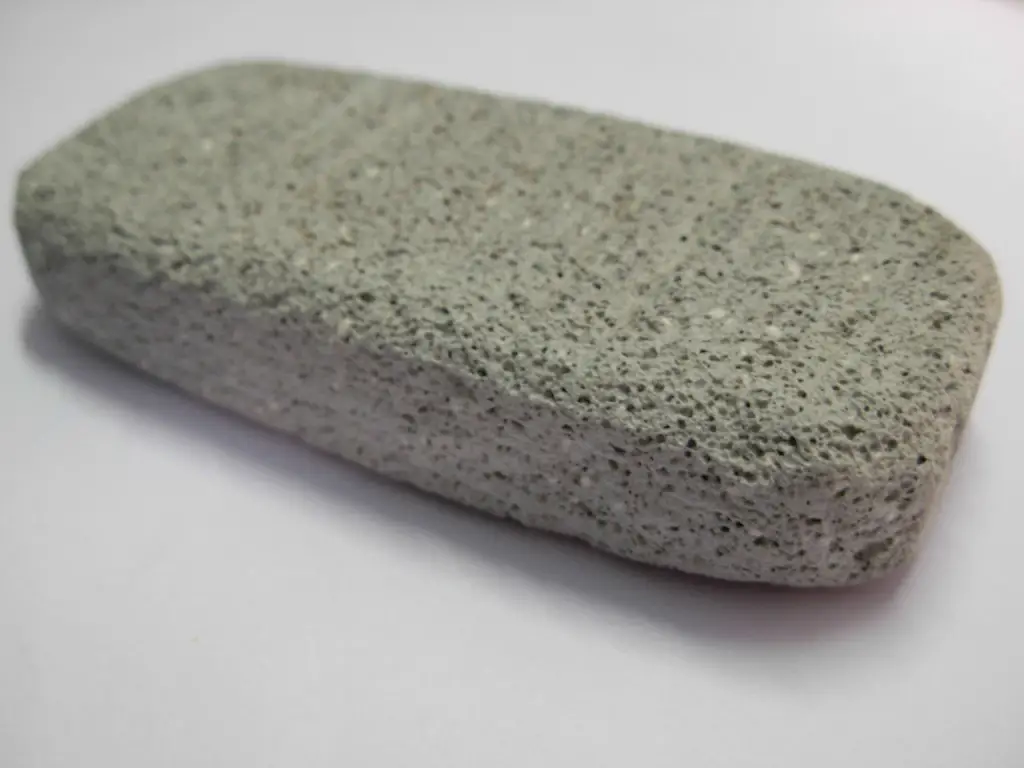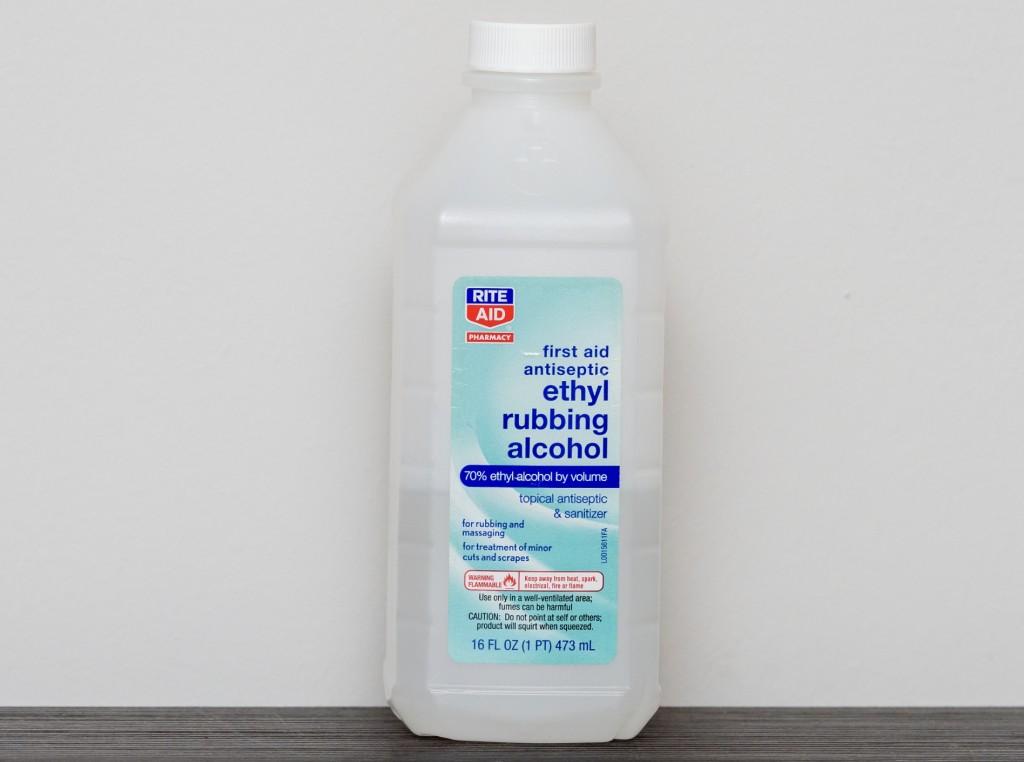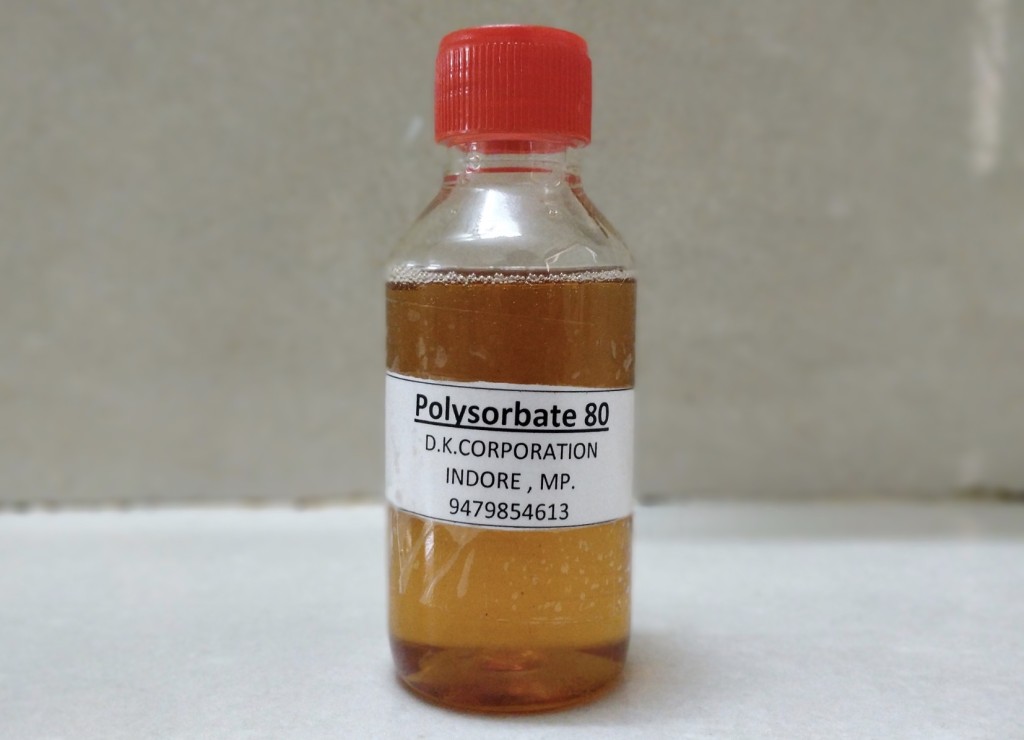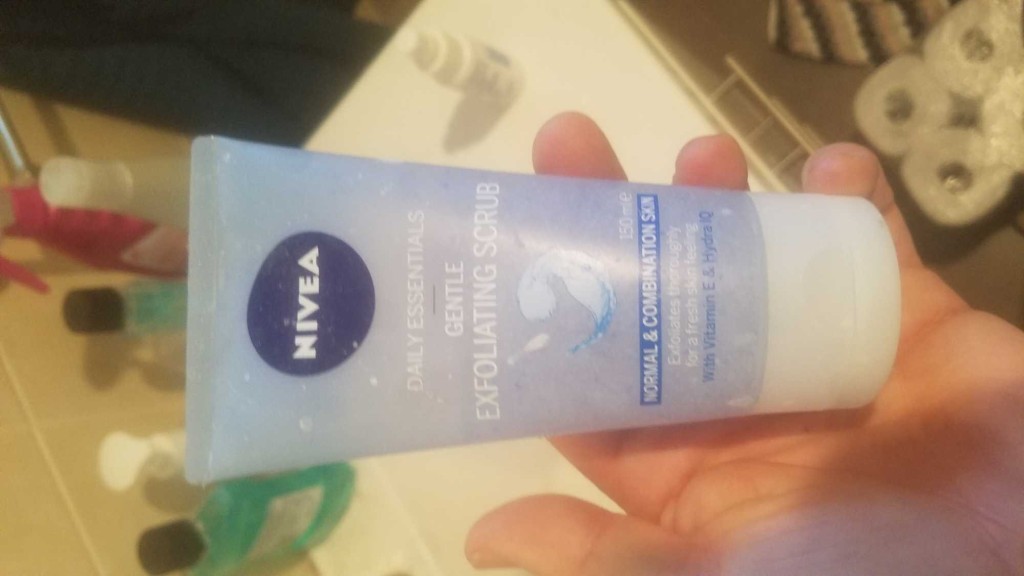
Dealing with tar on your skin can be quite a challenging experience whether you encounter it during construction or on a leisurely beach stroll. This sticky substance causes physical discomfort and metaphorical unease due to potential burns or injuries.
However, the good news is that there are effective methods available for removing tar from your skin which ensures a swift and pain-free recovery. We’ve compiled a comprehensive guide on how to get tar off the skin with both organic and inorganic solutions.
Organic Ways to Remove Tar from Skin
The removal of tar from your skin can be accomplished using a variety of organic techniques. Remember that not all of these techniques may be appropriate for all skin types.

If one method is ineffective for your skin then simply go to the next one. It’s important to become familiar with the components employed in these techniques before attempting them.
Method 1: Soapy Water and Pumice Stone
Create a soapy water solution by adding mild soap to warm water in a bowl or other container and using that to gently remove tar from your skin.

Step 1: Dip the affected area in soapy water and allow it to soak for a few minutes to soften the tar.
Step 2: Carefully rub the affected area in a circular motion with a pumice stone. Use light pressure while using the pumice stone to avoid skin irritation.
Step 3: Rinse the area thoroughly with clean water to wash away any remaining residue and soap.
Step 4: Apply a light moisturizing cream or lotion next to calm the skin and maintain its moisture.
How Does This Work?
Soap is a surfactant, which means it contains both hydrophilic (water-attracting) and hydrophobic (water-repellent) components in its molecular structure.
When soapy water is applied to the skin with tar, the soap molecules surround and encapsulate the tar, forming micelles that disperse the tar particles throughout the water. This process is known as emulsification.
As a result, the tar loses its adhesive properties to the skin surface and becomes suspended in the soapy water, making it easier to rinse away
When using a pumice stone, the rough surface interacts with the tar and, through friction, gently abrades and loosens the tar particles from the skin. The process is akin to a mild form of sanding, where the abrasive action of the stone effectively breaks down the tar’s adhesive bonds to the skin’s surface.
Method 2: Using Mayonnaise
Mayonnaise is suggested as a potential remedy for tar removal from the skin in a study published in the Journal of Pakistan Medical Association.

Step 1: Apply a thick layer of mayonnaise over the cooled tar is required for this technique. Give the mayonnaise at least 30 minutes to absorb into the skin. It will speed up the tar’s decomposition.
Step 2: Next, use a clean cloth or gentle brush to gently scrub the remaining mayonnaise and tar residue away.
Step 3: Cleanse the affected skin afterward to get rid of any leftover debris, stains, or bacteria.
How Does This Work?
Mayonnaise contains a significant amount of vegetable oil, which is a non-polar substance. When applied to the skin, the vegetable oil in mayonnaise can interact with the tar, weakening its adhesive forces and promoting its dispersion.
Besides, Mayonnaise usually includes an acidic component such as vinegar or lemon juice. The acidity can help break down some of the tar’s molecular bonds, further aiding in its removal from the skin.
Suggested Reading: Why Do My Feet Swell When I Travel?
Method 3: Ice Rubbing
Rubbing ice on tar can be helpful in certain cases.

Step 1: Start this method by rubbing the tarred area on your skin using an ice cube or an ice pack.
Step 2: Rub the tar continuously until it hardens or begins to crack. This will make it easier to remove the tar while taking care of damage or stains.
Step 3: Once the targets cracked, use your hand to take off the hardened tar. Be careful not to scratch the tar as this may irritate your skin even more.
Keep in mind that extended exposure to ice may result in severe skin problems like ice burning or frostbite, it is essential to practice caution. It is advisable to wrap the ice in a thin cloth or plastic bag before applying it to the tar-stained area, and avoid vigorous rubbing to prevent potential skin irritation.
How Does This Work?
When ice is applied to the tar-stained area of the skin, it rapidly reduces the temperature of the tar. As the temperature drops, the tar contracts and becomes more brittle. This thermal contraction weakens the adhesive forces between the tar and the skin’s surface, making it easier to break the tar away from the skin.
Method 4: Cooking Oils
Using various cooking oils can be a successful method to eliminate tar from your skin as shown in a research published in the Journal of Pakistan Medical Association. Start by looking through your cupboard for oils that are frequently used in cooking or for skin care. Sunflower oil, butter, canola oil, coconut oil, and olive oil are a few potential options.

Step 1: Start by generously applying your chosen oil to the skin around the tarred area.
Step 2: Give the oil around 20 minutes to work its magic on the tar so that it can break down and release the bonding agent.
Step 3: Gently peel or scrape the tar from your skin after 20 minutes.
Step 4: You can use a pumice stone to scrub away any remaining tar residue to help with the removal process. Avoid any potential skin discomfort by being gentle.
After the tar has been removed, wash off any leftover oil and tar with a soft cloth, some mild soap, and freshwater. Similarly, baby oil or suntan oil can also be effective alternatives for breaking down the tar.
How Does This Work?
Cooking oils are composed primarily of triglycerides which are molecules consisting of glycerol and three fatty acid chains. These fatty acids have non-polar hydrocarbon chains that exhibit a high affinity for other non-polar substances, such as the hydrocarbons present in tar.
When cooking oil comes into contact with tar on the skin, the non-polar fatty acid chains in the oil interact with the non-polar components of the tar. This interaction weakens the tar’s cohesive forces which results in the dissolution and dispersion of the tar into the oil.
In some cases, cooking oil can also act as an emulsifier, helping to disperse the tar in water. Emulsification occurs when the non-polar components of the tar are surrounded and stabilized by the polar parts of the oil molecules. This leads to the formation of tiny tar-oil droplets that can be more easily washed away with water.
Suggested Reading: How to Unclog Ears After Flying With a Cold? [New Methods 2023]
Chemical Ways to Get Tar Off Skin (Caution Advised)
If none of the techniques described above are successful in treating your skin condition then try any of these procedures. The following are some of the ingredients that are essential for carrying out these procedures:
Method 1: Commercial Solvents
Bring a commercial solvent to safely remove tar from your skin. A few common examples include Acetone, Isopropyl Alcohol (Rubbing Alcohol), and Mineral Spirits (White Spirit). One study by Journal of Burn Care and Research has shown positive results.

Using any of the solvents mentioned above, perform the steps listed below:
Step 1: Use a commercial tar remover or adhesive remover, or another lubricant or solvent designed for eliminating sticky materials.
Step 2: Apply the affected area with a soft cloth that has been slightly dipped in kerosene or gasoline. Avoid vigorously rubbing as this could spread the tar or irritate the skin.
Step 3: To remove the dissolved tar from the skin or surface, blot the tar with a clean cloth.
To avoid any potential harm, prevent from employing excessive force. Try to thoroughly wash the affected area with soap and water to guarantee that there are no traces of the solvent left on the skin. If not thoroughly washed off, gasoline, acetone, or kerosene can irritate the skin.
How Does This Work?
Commercial solvents are specially designed liquids that have unique properties that allow them to break down and dissolve tar. These solvents contain molecules that can attract and surround the tar molecules.
This action weakens the bonds holding the tar together, making it less sticky and easier to remove. These solvents work on the principle of “like dissolves like” where the similar molecular interactions between the solvent and tar facilitate the dissolution process.
Method 2: Polysorbate Cream
Neosporin, which contains polymyxin B sulfate, neomycin sulfate, and gramicidin, and Tween 80, which contains Polyoxyethylene 20 sorbitan mono-oleate, have both been shown to be successful in removing tar, according to a study published in PubMed Central. Use these steps for handling these items safely and successfully:

Step 1: Choose Tween 80 or Neosporin, both of which include polysorbate substances that help remove tar.
Step 2: The cream should be thoroughly applied to the area of the skin that has tar on it.
Step 3: For 20 minutes, let the cream absorb into the tar and your skin. This will provide a chance to efficiently break down the tar.
Step 4: After 20 minutes, carefully wipe the tar away with a clean cloth or wash it off with warm water.
A study by the Canadian Association of Emergency Physicians found that it can take about 4-8 hours for the tar to completely dissolve if you’re using Neosporin.
In comparison to other techniques, these items have been shown to successfully dissolve tar and are almost completely non-toxic. They may also be less painful and damaging to your skin.
How Does This Work?
The science behind Polysorbate 80’s action lies in its molecular structure. Polysorbate 80 is composed of two main components: a hydrophilic (water-loving) head group and a hydrophobic (oil-loving) tail group. This amphiphilic nature allows Polysorbate 80 to form micelles in an aqueous environment.
When Polysorbate 80 is applied to the skin with tar residues, the hydrophobic tail groups of the surfactant molecules are attracted to the hydrophobic tar substances. At the same time, the hydrophilic head groups are oriented toward the surrounding water or moisture.
As more Polysorbate 80 molecules surround the tar residues, they form tiny micelles with the tar substances encapsulated in their hydrophobic cores, while the hydrophilic heads remain exposed to the water. This process effectively emulsifies the tar, breaking it down into smaller droplets or particles dispersed in the water.
Once the tar is emulsified, it loses its strong adhesive properties to the skin surface, allowing it to be easily rinsed away with water or wiped off with a clean cloth. This mechanism of action enables Polysorbate 80 to enhance the cleaning efficacy of regular soap or water, making the removal of tar from the skin more efficient.
Editor’s Pick: How to Travel With Insulin: Tips and Tricks
Method 3: Exfoliating Scrub
The use of an exfoliating scrub has been recommended by a few experts. To remove lighter tar stains or deposits from the skin, use this procedure. The appropriate application of an exfoliating scrub is shown in the stages below:

Step 1: Apply a layer of the selected exfoliant to the area where you have tar or stains. Make sure the scrub has sufficiently covered the affected place.
Step 2: Use circular motions to gently massage the exfoliant into your skin. This action aids the exfoliator in successfully dissolving the tar or stains.
Step 3: Rub the exfoliator into the skin continuously until the tar or stains begin to break down and come off.
Be patient as the total amount of time it takes to complete this task will depend on how severe the tar deposits or stains are.
Try to select a skin-type-appropriate exfoliating scrub or make your own. You may buy commercial exfoliators in stores or make your own at home with the below-mentioned items.
- Mix baking soda and water to make a paste. Afterward, apply it to the affected region.
- Use a paste made of sugar and either coconut oil or olive oil to exfoliate the skin.
- Combine almond oil and salt to make a paste to be used as an exfoliant.
- Oatmeal that has been finely ground and honey combined to make an exfoliant scrub.
Before using any DIY exfoliant, it is imperative to test your skin on a patch to make sure there are no negative responses. If irritation develops, stop using it and look for alternative tar or stain removal techniques.
How Does This Work?
Some exfoliating scrubs contain chemical exfoliants like alpha-hydroxy acids (AHAs) or beta-hydroxy acids (BHAs). These chemicals work by breaking down the bonds between dead skin cells and the skin’s surface promoting their shedding. Additionally, chemical exfoliants can interact with the tar’s chemical structure which weakens its adherence to the skin.
The abrasive particles present in the exfoliating scrub act as physical agents to break down the adhesion between the tar and the outer layer of the skin. As the scrub is massaged onto the skin, the abrasive particles create friction which loosens the tar from the skin’s surface. These particles may be natural materials like crushed walnut shells, sugar, salt, or synthetic microbeads.
Remember: While mechanical exfoliation can help in removing surface-level tar, it may not be as effective for deeply embedded or heavily adhered tar residues.
Method 4: Petroleum Jelly
A study published in the Medical Xpress suggests this technique for effectively eliminating tar from the skin. Adhere to the following steps to remove tar by using petroleum jelly successfully:

Step 1: Apply petroleum jelly evenly to the tar-covered skin and the surrounding area.
Step 2: Allow the petroleum jelly to absorb into the tar for about five minutes.
Step 3: Once the waiting period is up, gently wipe any leftover tar and petroleum jelly from your skin.
To prevent causing any skin injury or irritation, use a tissue. Rinse your skin well to get rid of any last traces of tar or stains.
If there are any remaining tar or stain remnants on your skin then apply petroleum jelly again. If you still find a stain, again repeat the procedure until the tar is completely gone.
How Does This Work?
Petroleum jelly is a semi-solid mixture of hydrocarbons, primarily consisting of long-chain alkanes and paraffin. It is hydrophobic, meaning it repels water and lacks any polar functional groups. Instead, petroleum jelly is non-polar, and its molecules have weak van der Waals forces between them.
When petroleum jelly is applied to the skin with tar residues, it acts as a barrier between the tar and the skin’s surface. This barrier effectively isolates the tar from the skin.
As a result, the tar becomes less sticky and more manageable. One can gently rub the petroleum jelly-covered areas, either with a soft cloth or their fingers, to help lift and carry away the dissolved or dispersed tar particles from the skin. The petroleum jelly acts as a lubricant since it facilitates the tar’s separation from the skin without causing excessive friction or irritation.
Important Considerations
Knowing what can make the issue worse and what to avoid is crucial when working with tar or other sticky substances. Let’s examine these recommendations!
Things To Do During Tar Removal
While attempting to remove tar from skin, follow these tips:
- Run Cold Water Immediately: If you get tar on your skin then immediately run cold water over the affected part. Take a cold shower if there are large tar patches.
- Keep the Skin Under Water: According to Dr. Colin Tidy, you should dip tarred skin in water for at least 20 minutes before treating any burns, including those caused by tar.
- Let Wet Tar Dry: If the tar stain is wet then let it air dry before attempting to remove it. Avoid rubbing it against other surfaces to stop it from spreading further.
Things To Avoid While Removing Tar Off Skin
These are the mistakes many people have made while removing tar from their skin. Avoid them at all costs.
- Wearing Clothes or Jewelry: To avoid further harm try to refrain from removing clothes from tarred skin. If you are unable to remove attire securely, seek medical attention.
- Wiping with a Dry Cloth: If tar is found on your body then make sure to avoid wiping it off with a dry cloth. By doing this, the tar could spread and become harder to clear. Wait till you go home to fully clean it.
- Picking at Tar: Wait until the tar has cooled on your skin before picking at it. Dr. Toni Hazell advises letting it cool since doing so reduces the possibility of skin harm and encourages healthy recovery.
- Using Toxic Chemicals: Stay away from using toxic home products like alcohol, nail polish remover, ether, or aldehydes. As suggested by research in the Journal of Pakistan Medical Association, taking these chemicals can be bad for your health because they produce systemic toxicity through absorption.
Conclusion
Getting tar on your skin is one of the worst ever situations to be in. However, with the numerous ways we mentioned to get tar off skin, you will be as good as new in no time. Be sure to exercise caution with all of these ways. If the matter is serious, try to consult a doctor immediately rather than using any of these methods.
How to Get Tar Off Skin? - FAQs
While some household products like cooking oil or olive oil may have some mild tar-removal properties due to their oily nature, they might not be as effective as dedicated tar removal solvents. It’s generally recommended to use commercial solvents or petroleum jelly for safer and more reliable results.
Acetone and nail polish removers contain strong solvents that can remove tar, but they are harsh on the skin and may cause irritation.
If tar stains persist, avoid vigorous scrubbing, as it may cause skin irritation. Instead, try using a petroleum-based product like petroleum jelly to gently dissolve the tar.
![What To Wear To a Drag Show? [HOTTEST Outfit Ideas]](https://hopdes.com/wp-content/uploads/2024/01/What-to-wear-to-a-Drag-Show-390x220.jpg)



![What to Wear to an Outdoor Concert? [Cute Outfit Ideas]](https://hopdes.com/wp-content/uploads/2023/11/What-to-Wear-to-an-Outdoor-Concert-Cute-Outfit-Ideas-390x220.jpg)

